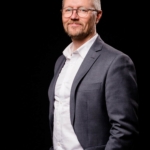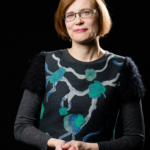Finns, the hosts of the World Circular Economy Forum have for decades relied on the use of a compass – in a country of long distances and uninhabited wilderness one often needs a little help to find the right way and navigate.
The compass was also brought into the limelight at the fourth edition of the World Circular Economy Forum, WCEFonline. The virtual event presented as a compass the circular economy measures embedded in the European Union’s Green Deal as well as national examples of circular strategies.
The host of WCEFonline, The Finnish Innovation Fund Sitra shared its lessons of using one national compass – the circular economy road map – in the form of a guidebook.
”This guide offers a basic structure that can help countries in finding their own way for advancing the circular economy. But the learnings from Finland cannot be directly transferred to another country. As the phrase goes: one size doesn’t fit all,” summarises WCEF Project Director Mika Sulkinoja of Sitra at the end of the event.
Local culture adds flavour to the path
Several speakers at WCEFonline pointed out that we’ve already come further from the first steps towards a new, smarter economy. There is a much better understanding of the multitude of means and pathways towards a circular economy.
For instance, Kate Daly of Closed Loop Partners in New York stated that “we must commit to building on its knowledge in addition to adopting the successful European models in our own North American cultures and governing systems.”
Minister of Environment and Climate Change Canada, Jonathan Wilkinson also stressed the difference of the basis: “In the US and Canada, our economies rely heavily on natural resources unlike some earlier adopters of the circular economy”.
African free trade area to boost the co-operation a circular economy relies on
The starting point for different countries has also been shaped by the COVID-19 pandemic, which has affected the economy of individual countries differently. So far, Africa has focused on offering its natural resources to the use of the rest of the world, and now the continent is facing quite a different situation: export is not flourishing.
Dr Joy Kategekwa of United Nations Development Programme reminded that by developing local loops Africa could improve the resilience of its economy and make it less vulnerable to sudden changes and shocks.
According to her the continent has a huge potential for a swift development into the circular economy.
“Africa has never been more united,” she referred to the freshly formed African free trade agreement. For the circular economy, this development is most favourable, as closed loops call for co-operation in all phases of the cycle. Without collaboration, the development of a circular economy cannot flourish.
Finland is happy to share its observations and experiences – even if they were not successful – for other countries on developing circularity, Mika Sulkinoja refers to the new road map guide.
Sulkinoja hopes to see more African companies at the WCEF as well as in the circular community in future. “By seeking the company of interesting circular economy cases they can discover suitable business models and be among the first successful economies of the future.”
We can do this by ourselves – or can we?
Director Inger Andersen of UN Environment Programme who analysed the situation in North America also stressed that the circular economy has a good chance of developing even without the swift actions by governments. For instance, she emphasised the role of cities as drivers of change as well as the responsibility of technology giants, especially in developing material circulation in consumer electronics.
So, do we need to spur countries with, say, guidebooks?
Leading specialist Laura Järvinen of Sitra reminds that it’s not just the end result in drawing road maps for governments that counts, it’s the process that makes it worthwhile.
”Drawing a road enables a multitude of parties to be part of defining the direction for the future economy, all the way from countries to businesses and local authorities to the third sector.”
It’s not just what I or we do – the transition to a circular economy calls for sharing inspiration and best practices. There seems to be a dire need for forums like the WCEF also in future.
”This will be and must be more than a great event – it must serve as a catalyst and launching pad for developing a clear and compelling road map for the circular economy of the future,” Minister Wilkinson crystallised the idea.
Read more in the guidebook How to create a national circular economy road map – A guide to making the change happen





















Recommended
Have some more.